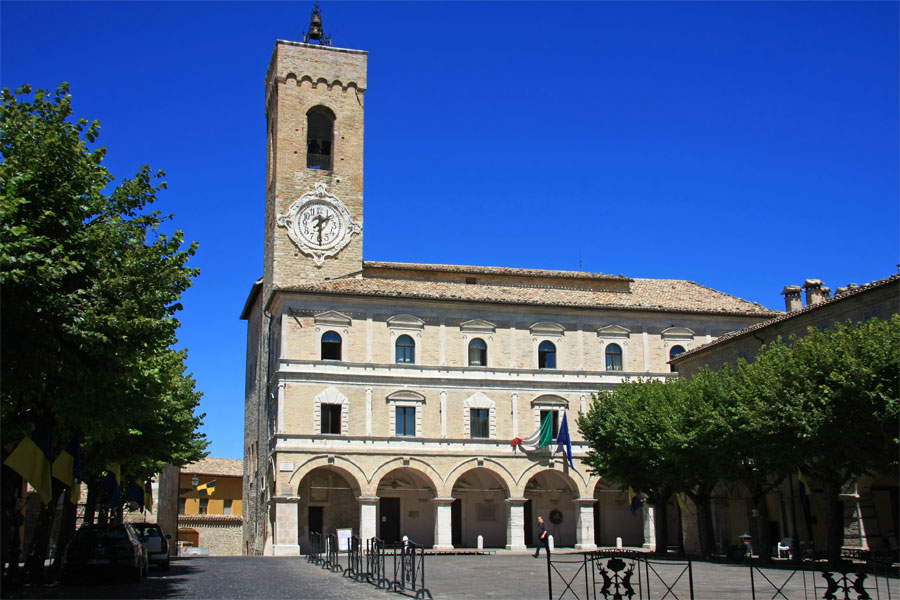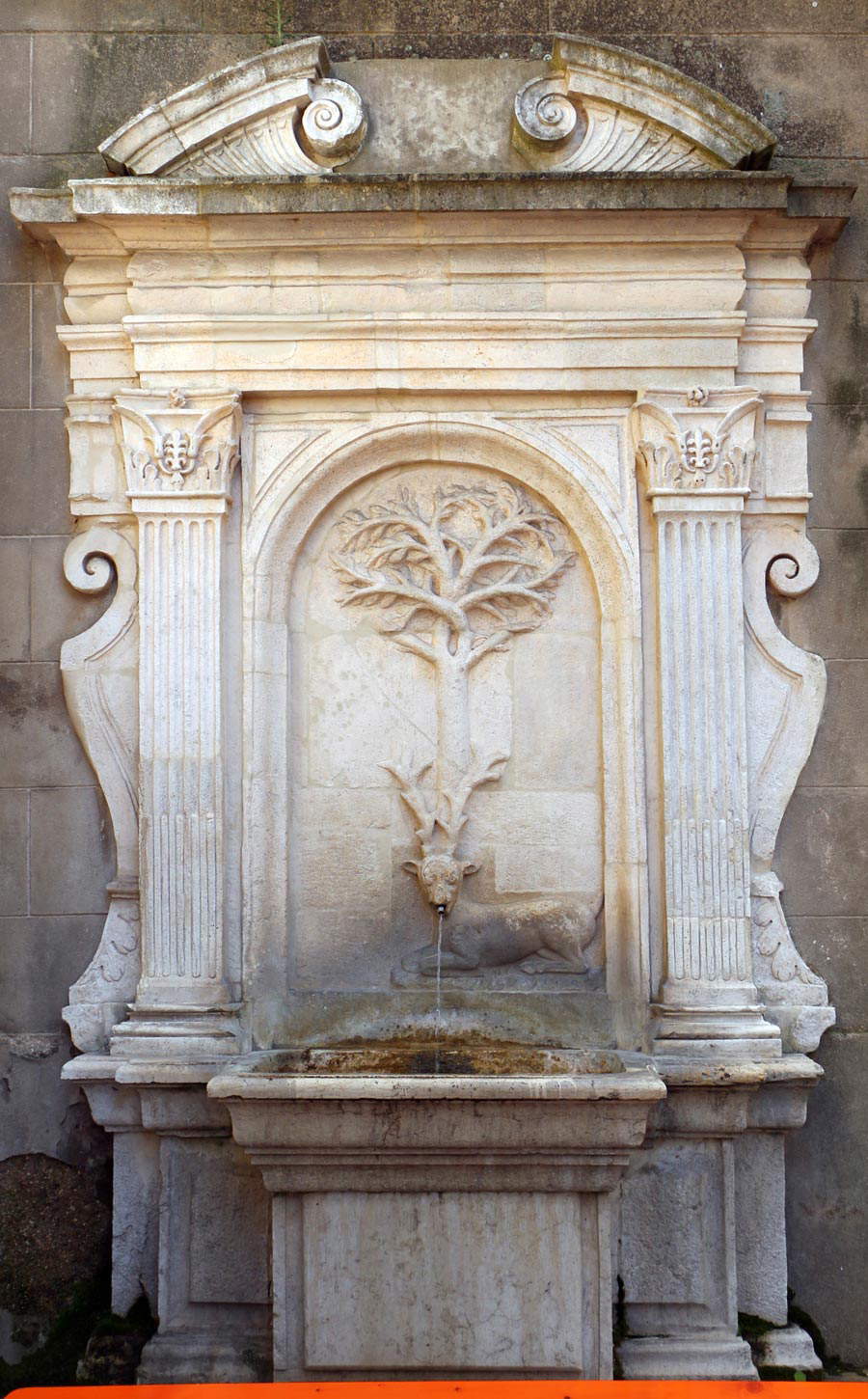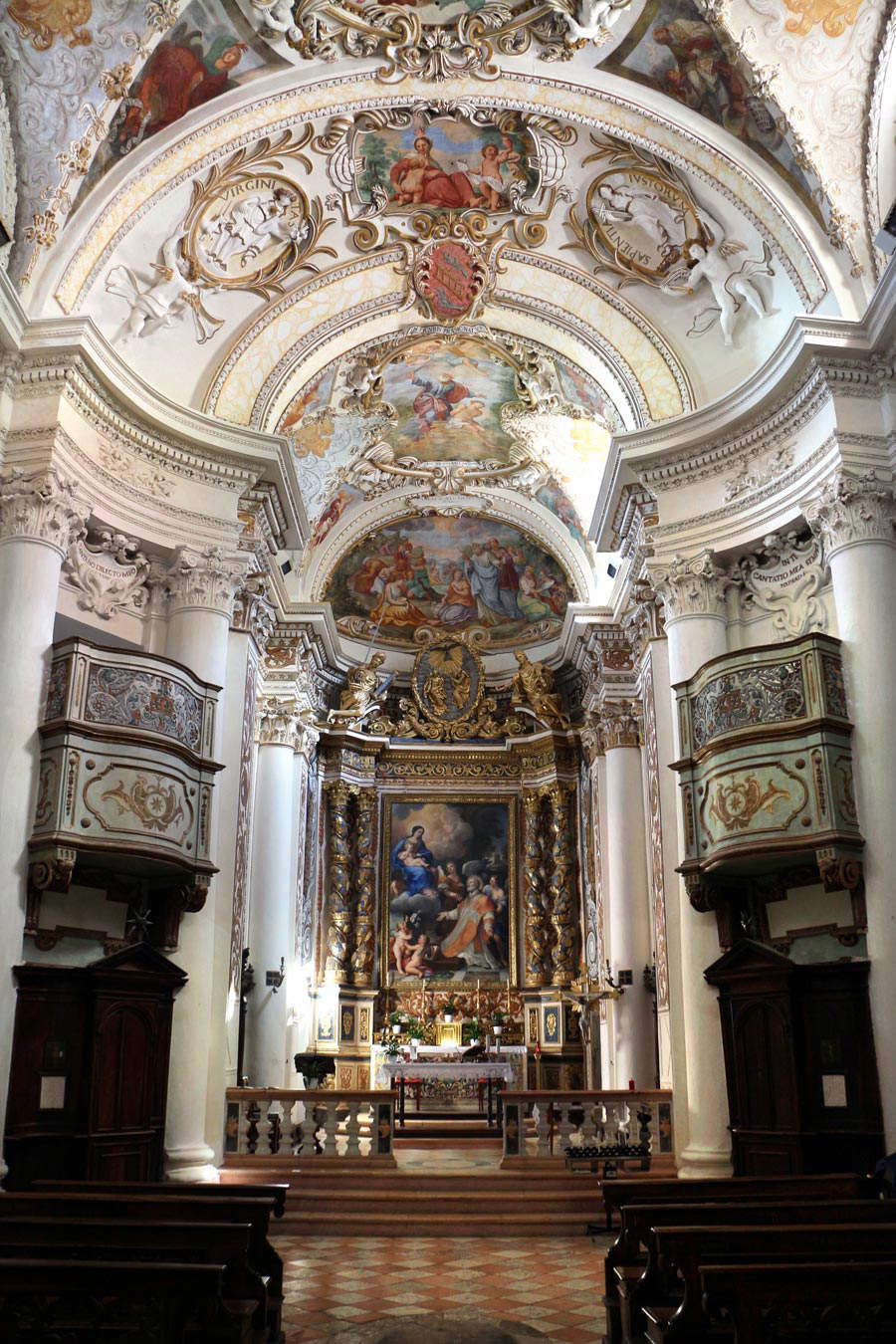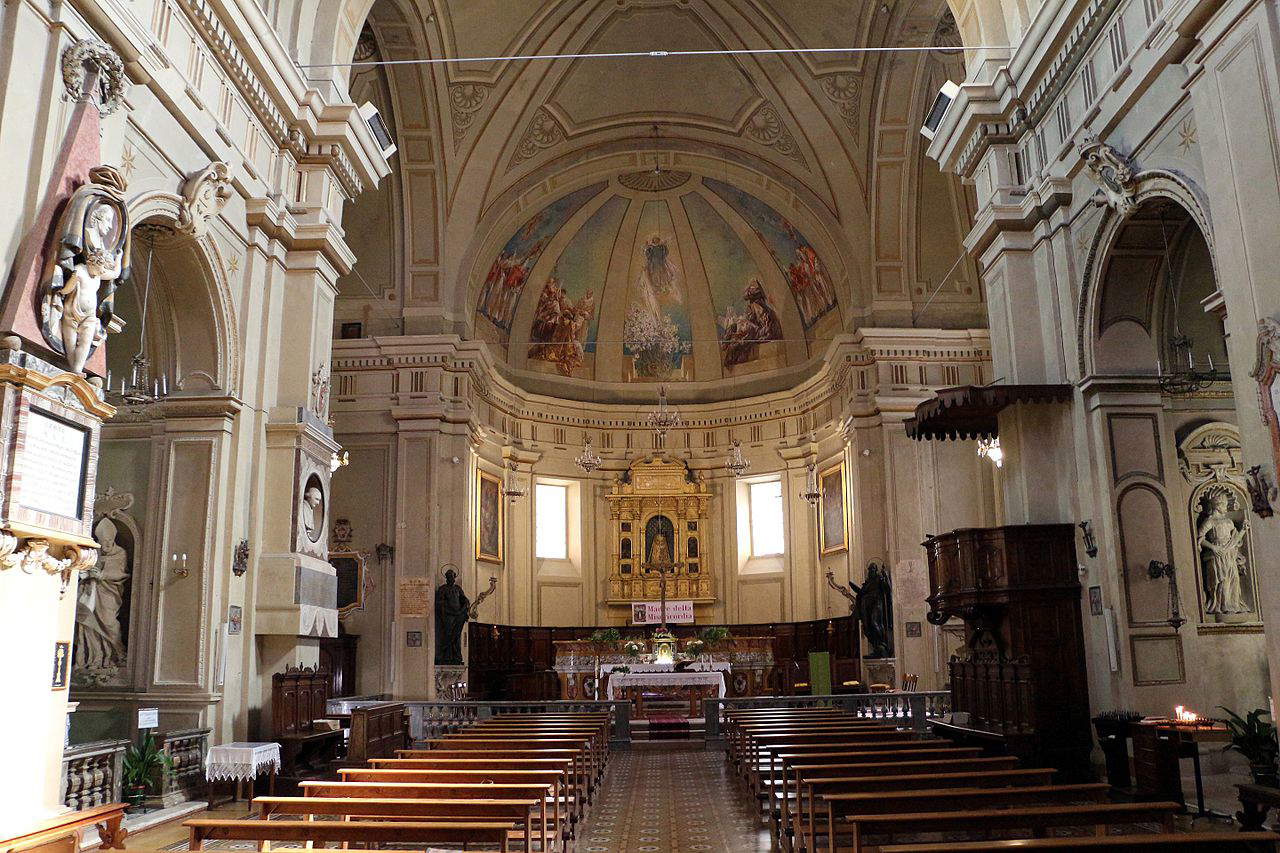by Redazione , published on 25/08/2020
Categories: Travel
/ Disclaimer
Journey to the village of Cingoli, Marche, famous for Lorenzo Lotto's extraordinary altarpiece but not only.
Cingoli, in the hills of the Marche region where
Lorenzo Lotto and a pope meet.
In the municipal reform books of Cingoli, a “supplicatione” from the prior of the church of San Domenico to the municipality of Cingoli is recorded on the date of February 25, 1537: the clergyman asked the city administration to contribute to the expenses of making a “conam” (i.e., an ancona, or altarpiece) for the church itself, since the alms collected by the confraternity of the Rosary, who commissioned the painting, had not been sufficient. The municipality agreed with a handout of 40 florins, which would, however, be paid when the painting was finished. Thus opened the story of Lorenzo Lotto’s Madonna of the Rosary, the greatest masterpiece of the Marche town and one of the most extraordinary works in the entire region. A Virgin holding a particularly agitated child while giving the rosary to St. Dominic, while on the opposite side St. Esuperanzio, patron saint of Cingoli (the thirteenth-century collegiate church of Sant’Esuperanzio, the town’s greatest Gothic monument, is named after him), offers her an accurate model of the town. Around, standing symmetrically, are Saints Magdalene, Vincent Ferrer, Catherine of Siena and Peter the Martyr. In the center, several putti stirring flowers and water in a large bucket. The standing Saint John turns his index finger upward: it is not known whether to indicate the Madonna or the painter’s signature. And above, the mysteries of the rosary, divided between the joyful, the sorrowful and the glorious, inscribed within large medallions.
The friars of San Domenico collected the promised 40 florins in December 1539, when the altarpiece had already been finished for a few months. Since then, Lorenzo Lotto’s masterpiece has not moved from Cingoli, except for a few exhibitions. And since then, numerous local artists have been inspired by it, and the San Domenico altarpiece has become a kind of prototype for all paintings of similar subject executed in the area. According to Roberto Longhi, this work also constituted the precedent for a famous painting by Caravaggio, the Madonna of the Rosary now in the Kunsthistorisches Museum in Vienna. What is certain is that it is one of the main reasons why one goes to Cingoli, even if today it is no longer possible to see, at least temporarily, Lorenzo Lotto’s altarpiece in its original location: problems with the church’s usability have led to its temporary relocation to a grand hall in the Palazzo Comunale, a room where a frieze runs bearing the coats of arms of all the ancient noble families of the town, and which is closed at the back by the appearance of the superb Lotto canvas.
At that time, Cingoli was a placid city of the Marca, part of the Papal States. Indeed: it was one of the richest regions of the Papal States, so much so that Lorenzo Lotto worked for decades in these lands, paid much better than elsewhere by wealthy local patrons (although the San Domenico altarpiece was the only one he painted for Cingoli). But the history of this village nestled among the verdant hills of the Musone valley has not always been so peaceful: at the time of the War of the Eight Saints, between 1375 and 1378, Cingoli, which at the time was not so different from how we know it today (five thousand inhabitants as opposed to almost ten thousand today, which, however, also takes into account all the hamlets), was among the towns that rebelled against the papal authority of Pope Gregory IX. At that juncture, a powerful Cingolian, Masio Cima, was podestà of Florence, and Florence was at the head of the league that fought against the pope: so it was not difficult for the Cima family to seize Cingoli in arms, driving out the podestà who represented the pontiff in the city and having their insignia flown over the Palazzo del Comune in place of the papal ones. Gregory IX responded with an excommunication for the whole of Cingoli, which was followed by an interdict pronounced by the bishop of Osimo. This was an ephemeral rebellion, however, since in 1377 the pope reconquered the town. The peace of Sarzana, in 1378, sanctioned the end of hostilities, and Gregory IX’s successor, Urban VI, decreed a pardon for the rebels, and for the Cima there were no serious consequences, on the contrary: they maintained their hegemony over Cingoli, although without formal recognition.
 |
| View of Cingoli |
 |
| Lorenzo Lotto, Madonna of the Rosary (1539; oil on canvas, 384 x 264 cm; Cingoli, Palazzo Comunale) |
 |
| The hall where Lorenzo Lotto’s altarpiece is located |
 |
| The Palazzo Comunale of Cingoli. Ph. Credit Alessandro Vecchi |
 |
| The collegiate church of Sant’Esuperanzio. Ph. Credit Francesco Bini |
The past of the family, which retained its position of power until the mid-15th century, is remembered today by the palace that bears their name, although little has remained of the most glorious era for them. What has remained, however, is much of seventeenth- and eighteenth-century Cingoli, the period of its greatest historical flowering, when the city’s prestige grew in tandem with the development of its economic activities. And Cingoli also saw the return, in 1725, of the bishop’s chair that the town had had in earlier times. But its religious history would also have other, even higher moments: we refer, in particular, to the birth, in 1761, of Francesco Saverio Castiglioni, who ascended to the throne of Peter in 1829 under the name of Pius VIII. A short papacy, of just a year, but enough for his fellow citizens, in 1835, to pay homage to him with the monumental Porta Piana, the solemn, neoclassical entrance to the city from the lower part, which immediately leads into Corso Garibaldi, the main artery of the historic center (so much so that it is also known as “Via Maggiore”), along which are arranged all the palaces of the ancient nobility of Cingoli, and along which are also buildings of worship, such as the curious church of San Girolamo, with its stone facade squeezed between two palaces, or the mammoth church of Santa Lucia, already attested in the Middle Ages but rebuilt in the eighteenth century. And it is more or less halfway along Corso Garibaldi that one encounters the Fountain of Bad Weather, already mentioned in the 16th century and which still presents itself to us in the appearance of that century: it is called by this bizarre name because it was poorly supplied and the water descended copiously only after lasting storms. The water comes straight out of the mouth of the deer, the symbol of the town.
Arriving at the highest part, we reach Piazza Vittorio Emanuele II: here the highest town authority and religious authority, the Town Hall and the Cathedral of the Assumption, face each other. The palace is of thirteenth-century origin: some traces of the first core of the building are still extant (what we see today, with the wide loggia above which rise two neat floors with gabled windows, is instead of sixteenth-century appearance). The tower dates from the 15th century: it was 1482 when the craftsman Antonio da Milano placed the large stone quadrant there. From the 16th century the palace was also equipped with a theater, which was dismantled in the 1930s. Today, in addition to being the seat of the town hall, it also houses the State Archaeological Museum of Cingoli, where the territory from prehistoric times to the time of the late Roman Empire is recounted.
The baroque, single-nave cathedral with three large apses is perhaps the finest example of seventeenth-century architecture in the city (it is just on par with the equally splendid church of San Filippo Neri). You wouldn’t know it from the outside, but its solemn and enveloping interior will immediately change your mind. The monument of Pope Pius VIII, the first and only Cingolan pope, is preserved here. Which still reminds us of those twenty months when Cingoli was at the center of the world.
 |
| Porta Piana. Ph. Credit Alessandro Vecchi |
 |
| Bad weather fountain. Ph. Credit Francesco Bini |
 |
| The church of San Filippo Neri. Ph. Credit Francesco Bini |
 |
| Interior of the Cathedral of Cingoli. Ph. Credit Francesco Bini |
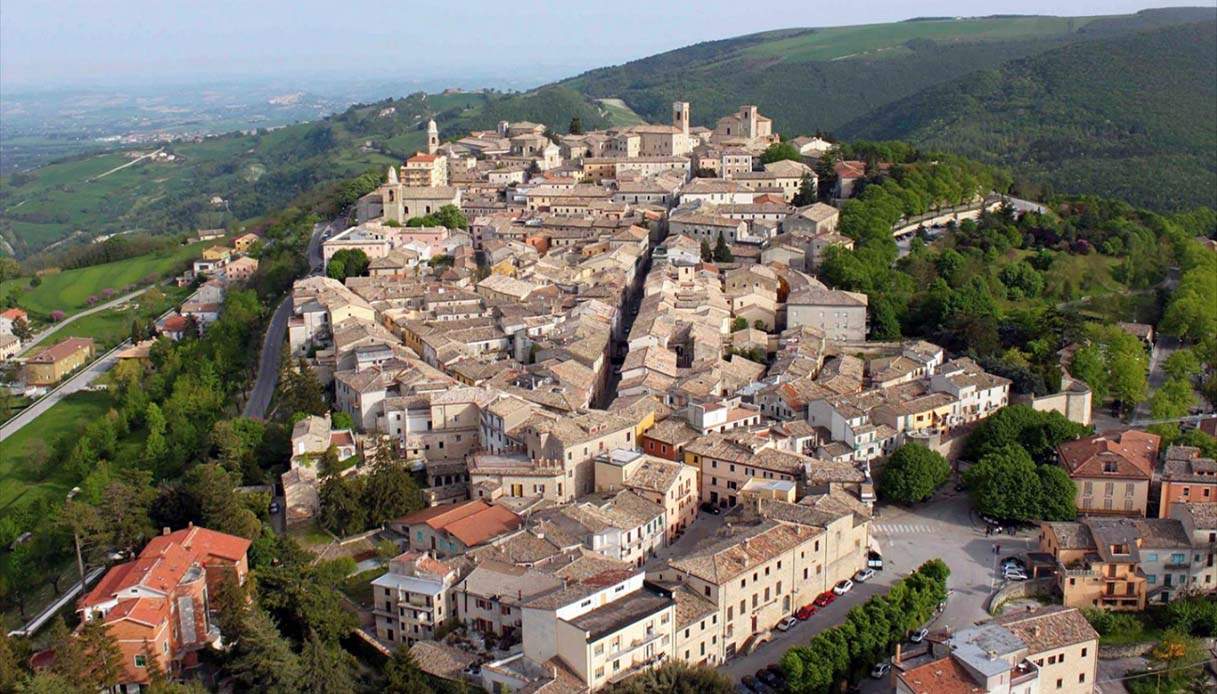 |
| Cingoli, in the Marche hills where Lorenzo Lotto and a pope meet. |
Warning: the translation into English of the original Italian article was created using automatic tools.
We undertake to review all articles, but we do not guarantee the total absence of inaccuracies in the translation due to the program. You can
find the original by clicking on the ITA button. If you find any mistake,please contact us.



